Advances in Applied Sociology
Vol.4 No.3(2014), Article ID:43667,16 pages DOI:10.4236/aasoci.2014.43012
Widening of a Poverty Gap: A Condition of Governance Crisis in Hong Kong
Alfred C. M. Chan1, Stephen Y. L. Cheung2, Tony C. K. Lai3
1Department of Sociology & Social Policy, Lingnan University, Hong Kong, China
2Department of Asian and Policy Studies, The Hong Kong Institute of Education, Hong Kong, China
3Asia-Pacific Institute of Ageing Studies (APIAS), Lingnan University, Hong Kong, China
Email: sscmchan@LN.edu.hk
Copyright © 2014 by authors and Scientific Research Publishing Inc.
This work is licensed under the Creative Commons Attribution International License (CC BY).
http://creativecommons.org/licenses/by/4.0/


Received 7 January 2014; revised 7 February 2014; accepted 14 February 2014
Abstract
Hong Kong as a free society, where capitalistic economy is essentially adopted, has failed to balance the distribution of resources and led to the widening of income disparity, indicated by a Gini coefficient of over 0.53 (Ma, 2011) as well as the stagnation of median household income of $18,000 across 10 years (The World Bank, 2012). The problem of poverty and income inequality had been increasingly felt by the citizens (Wong, Wan, & Law, 2010) which severs the stability and legitimacy of the Hong Kong Government’s rule which hinges on the materialistic benefit for the whole citizenship (Ma, 2011). The unchangeable fate of poverty as well as the increasing pursuit of social justice (as indicated by an increase of keywords such as “Corporate social responsibility”: 6 occurrences in 2001; 522 in 2010) leads to the emergence of scepticism and grievances against the privileged rich (as indicated by an increase of keywords such as “Hate-rich”: 0 in 2001; 1257 in 2010). Failure to identify the social confrontation and to exert the Government’s role of resource redistribution will lead to governance crisis (Hall, Critcher, Jefferson, Clarke, & Roberts, 1978). Hence, the manager requires indication tools to assess the situation (Holzer & Kloby, 2005). A quantifiable social indicator of media coverage (Bengston & Fan, 1999) is required to evaluate objectively the qualitative social tension.
Keywords:Poverty Gap; Income Disparity; Social Indicator; Governance Crisis; Economic and Social Tensions; Media and Public Opinions

1. Introduction
It has been observed that state governance can be affected mostly by one single factor (e.g. as measured by Gini coefficient of 0.5 and above) when political stability is maintained (United Nations Human Settlements Programme (UN-HABITAT), 2010). Gini coefficient is a ratio of the actual income distribution amongst households to the even distribution amongst households, which measures the differentiation between the reality and the ideal equality—what commonly known as the poverty gap in social studies (The World Bank, 2004). The gap entails inequality amongst the population in wealth distribution and hence is an area reflecting efficient or inefficient governance regime for income distribution (Ma, 2011; Kwon, 2009). Widening gap means a slotting of social resources skewed towards the wealthier group. In a governance mode where citizen’s participation is openly encouraged yet capitalistic market economy is at the same time promoted (Wong, Wan, & Law, 2010), government has a key role to maintain a balance distribution of social resources; and if that role fails, citizens’ grievances (e.g. demonstrations against the State and its policies, citizens’ demands for more services and citizen’s taking antagonistic actions against government, are indicative of governance in crisis) would rise as the poverty gap widens.
This paper is an attempt to highlight Hong Kong, as a free society adopting essentially a capitalistic economy, which is stepping into a governance crisis because of its failing role in balancing the distribution of social resources in a widening of poverty gap.
2. Hong Kong as a Capitalistic Economy: Free Market with Minimum Government Intervention
While the global economy staggers for recovery from the financial crisis in 2008 and is currently shadowed by the European Debt, Hong Kong although shared the blow as one of the key financial centres, has picked up a quick pace in rebounding for her close relationship with the world engine of economy—Mainland China which have kept a vibrant growth amidst all adversities.
Hong Kong has only experienced a contraction in GDP by 3.2% in 2009, but soon regained the momentum in 2010 and 2011 for a drastic growth of 7.3% and 8.6% respectively, according to the Census and Statistics Department’s report on 2011 Gross Domestic Product (2012a) (See also Figure 1). Yet, with such outstanding figures amidst the gloomy economy, Hong Kong people have increasingly complained about poverty.
Poverty, is no longer seen as an anthropological subject in the sense of impeded physical functioning including unhygienic housing conditions, a stingy diet, insufficient shelter and fiscal vulnerability as suggested by Charles Booth and Benjamin Seebohm Rowntree in the late nineteenth century, but is currently viewed as an exclusion to social participation where people experienced a significant shortage in resources compared to the average of their society who find themselves being discriminated from customary social activities and lifestyles (Niemietz, 2011).
As poverty is a relative concept, it is not the aim of this writing to debate on its definition or its measurement. Rather, we must pay attention to the increasing existence and persistence of poverty.
Hong Kong is not a communist state, and capitalistic rules apply as in most economies worldwide. Bread and butter are won in accordance to individual efforts, and the market demand for services and skills. This is where income disparity derived from the mismatch between the demand and supply for services and skills.
The City has been consecutively ranked first for 18 years since 1995 in the Index of Economic Freedom by
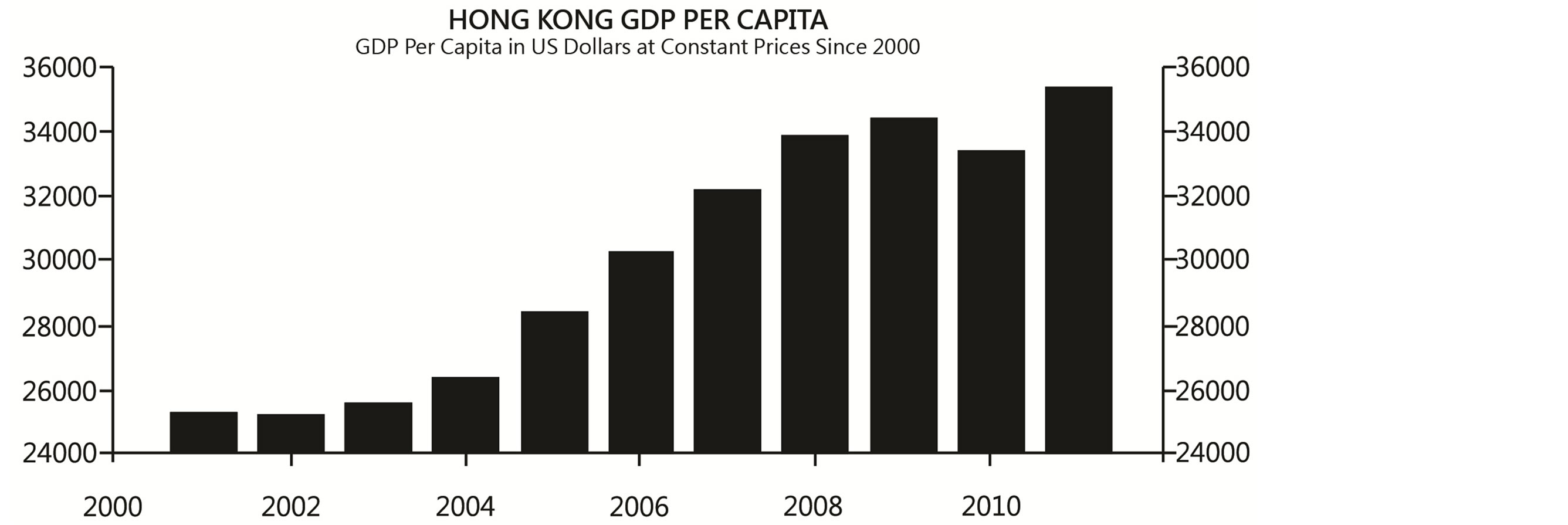
Figure 1. Hong Kong GDP per Capita in US Dollars at Constant Prices since 2000.
the Heritage Foundation and the Wall Street Journal, a think tank and a business publication in the US, indebted to the Government’s adoption of positive non-interventionism that the principle of “big market, small government” is well kept. The Hong Kong administration has a strong belief in the practicability and effectiveness of the free market in the regulation of the economy.
Through the market mechanism, labour should be absorbed by capitals. The government is only responsible for stimulating economy and maintaining full employment, that income earned by the working population can thus be redistributed to the dependents of their households. If anyone would want to improve their standards of living, he or she could always increase his or her wealth (i.e. purchasing power) through various methods, mainly by income raise and the accumulation of capital (e.g. property) which are always achievable through climbing up the career path and can be speeded up with the help of appropriate investments.
The success of the market mechanism relies on the household redistribution of income through individual efforts, but in such a habitat where the rules of natural selection applied, there are always some unprivileged and disadvantaged who are incapable to sustain themselves. This is when the government intervenes as a second tier income redistribution through the welfare system to safe-net those who have left out from the market system.
Being a former colony of the British Commonwealth, Hong Kong extends the old welfare regime into the new sovereignty and operates as a welfare state (Chan, 2006). Only a minimum subsidy is made to those out of financial means out of humanitarianism to help them sustain their basic necessity, as in most of the capitalistic welfare states in the world especially the United States, in fear of hampering the work initiatives of the hand-out recipients which may thus disrupt the operation of the market mechanism. The strong economic growth as experienced by the Hong Kong people for decades has reinforced the confidence of neo-liberalism.
3. The Widening of the Poverty Gap: Failure in Balancing Income Equality in a Knowledge-Based Economy
But the economic reality is not always so ideal and perfect. The income gap has been greatly and continually widened, the Gini coefficient of Hong Kong has raised from 0.451 in 1981 to 0.533 in 2006 (Ma, 2011). According to the United Nations Development Programme (UNDP) (2011), Hong Kong has been classified as a region with “very high human development” and ranked 13 globally. However, with a Gini coefficient of 0.434, Hong Kong income inequality is more serious than many advanced economies even the United States (0.408) which is already an extremely capitalistic country. The United Nations even ranked Hong Kong as the “number one unequal city” in Asia in 2008 and amongst developed economies worldwide in 2009 (United Nations Human Settlement Programme (UN-HABITAT), 2008). Despite the strong growth in GDP per capita from US$25,507 (≈HK$16,579/month) in 1998 to US$30,865 (≈HK$20,062/month) in 2008 resembling to a 21% increase over a decade (The World Bank, 2012), the monthly median household income of HK$18,000 in 1998 remained the same in 2008 and even until 2010 (See Figure 2). This has indicated that most of the population
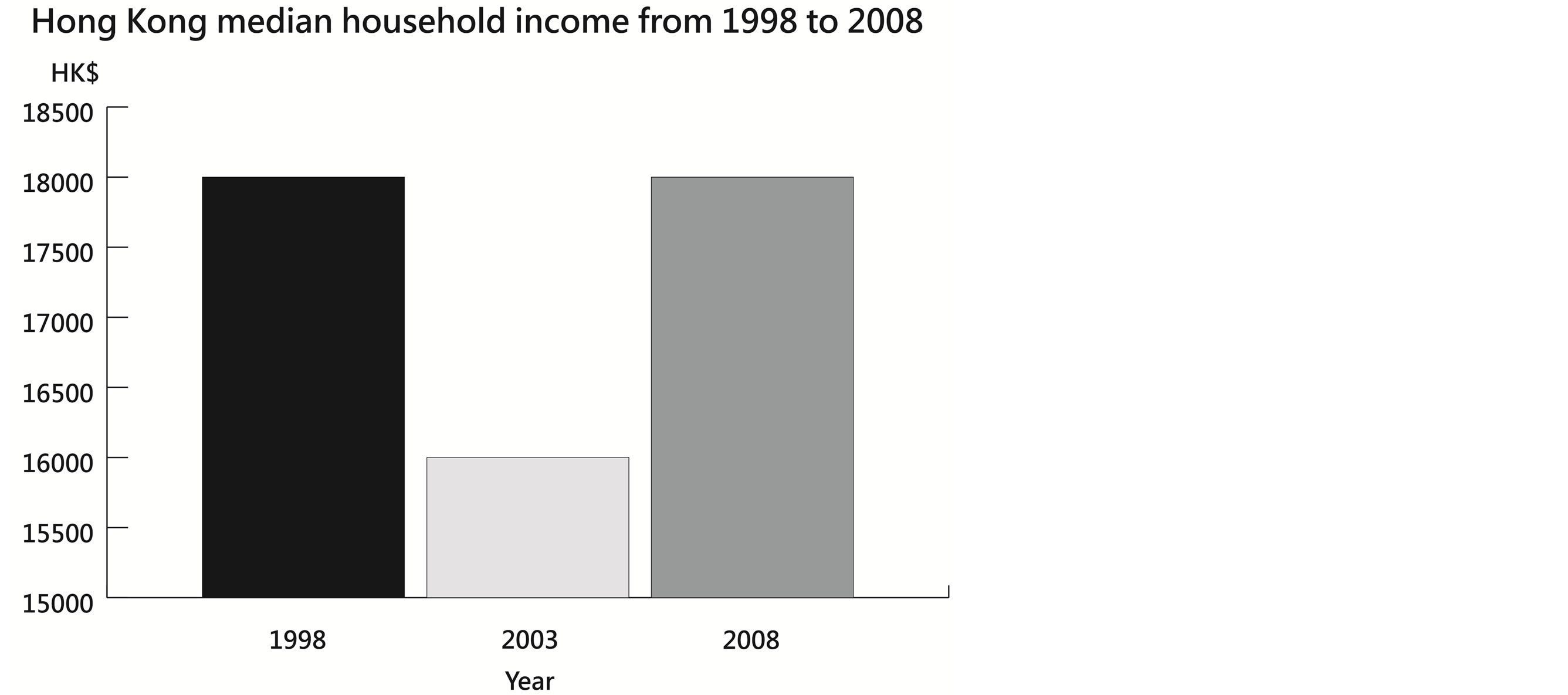
Figure 2. Hong Kong median household income (1998-2008).
have not benefited from the economic expansion. The share of income or expenditure in the Hong Kong economy of the poorest one-tenth equals to only 2% of the whole population, while their richest counterparts contribute to 34.9%. With simple calculation, the difference of income or expenditure between the wealthiest 10% and the poorest 10% is about 18 times (United Nations Development Programme (UNDP), 2009: p. 195).
The polarizing differentiation of wealth between those of a higher education and professional level and the low-skilled workers becomes more prominent after the structural change of Hong Kong society into a knowledge-based economy. As one of the developed cities, a high percentage of the productions is constituted by the tertiary sector including services, finance as well as technological or high value-adding industries, where only professional skills and knowledge are cherished as valuable assets in the labour market. Workers in Hong Kong also faced competition from firstand rapidly growing second-tier cities in the Mainland. As explained by the Government’s economist, market liberalization in developing countries has decreased job opportunities in manufacturing and related industries such as logistics that middle-and lower-skilled workers have to accept a lower salary to maintain competitiveness. Generally, the income of workers with lower skills and education level will gradually diminish when their skills become obsolete as they age, but those with a higher educational background and professionalism will continue to receive raises in income progressively (Kwok, 2008). The income gap is a definite outcome of the current knowledge-based society which demands a new set of services and skills.
4. Low Mobility in Career Slows the Accumulation of Wealth: Keener Competition with Low Returns
Now Hong Kong economic prospect is unclear as the global economy contracted. The government responses to economic adversities, such as the Asia Financial Crisis in 1997 with neo-liberalization by speeding up the process of marketization, subcontracting and privatization. Corporations reacts by slimming workforce into a less hierarchical structure that many experienced middle-ranked managerial workers are cut. A simpler hierarchical arrangement means a lower opportunity to get promoted and thus getting a smaller raise in income. In addition, the competition is keen for highly educated jobs as “over the past ten years, the proportion of people with tertiary education has increased from 21% to 31% of the total workforce, registering a 10 percentage points increase” (Kwok, 2008: pp. 2-3). There is also the deflation in academic qualification, that overseas talents as a product of the globalization have also contributed to the heating up of competition in the job market.
The ample supply of human resources mixed with a downward economy has lowered the chance of promotion, increased job insecurity and crippled the bargaining power for income raise of workers. Such climate changes of the job market have guaranteed no upward mobility with hard work and loyalty. Especially for the new tertiary graduates who constitute most of the entry positions in many corporations, have not advanced with much significance in terms of positions and income. They have been coined as the “busy-poor”. Even the highly educated have felt the low mobility between social classes, not to mention the less knowledge equipped workers in this knowledge-based economy. No more than one-third of the families from the less educated background have shown optimism towards the prospects of moving upward the social ladder (Ma, 2011).
5. Inflation Leads to a Loss of Purchasing Power: Declining Spending Power of the Public
Accompanying Hong Kong growth is the imported inflation mainly brought by the Mainland China, which supplied the Special Administrative Region with most of the commodities. The consuming power of Hong Kong Dollar has dropped significantly due to the depreciation of the pegged US Dollar as well as the surging price of the Chinese currency due to the revaluation of Renminbi. The consumer prices and household expenditure as recorded in the Consumer Price Index have reflected great leaps in terms of inflation rates from 2008 to 2011, that there are increases of 4.3%, 0.5%, 2.4% and 5.3% in the overall cost of commodities and services (See Table 1 & Figure 3). In 2011, basic necessities such as housing, food and transportation have skyrocketed for 7.2%, 7.0% and 4.4% respectively (Census and Statistics Department, 2012b). However, the median monthly domestic household income has only increased from $17,250 in 2006 to $20,500 in 2011 (2011 Population Census Office, 2012), equivalent to an average of 3.8% increase per year. It is obvious that the real income has decreased significantly in recent years that the life quality of the Hong Kong people has been hampered by the compounding financial burden. Recent asset-bubbles especially the surging property prices which have sur-
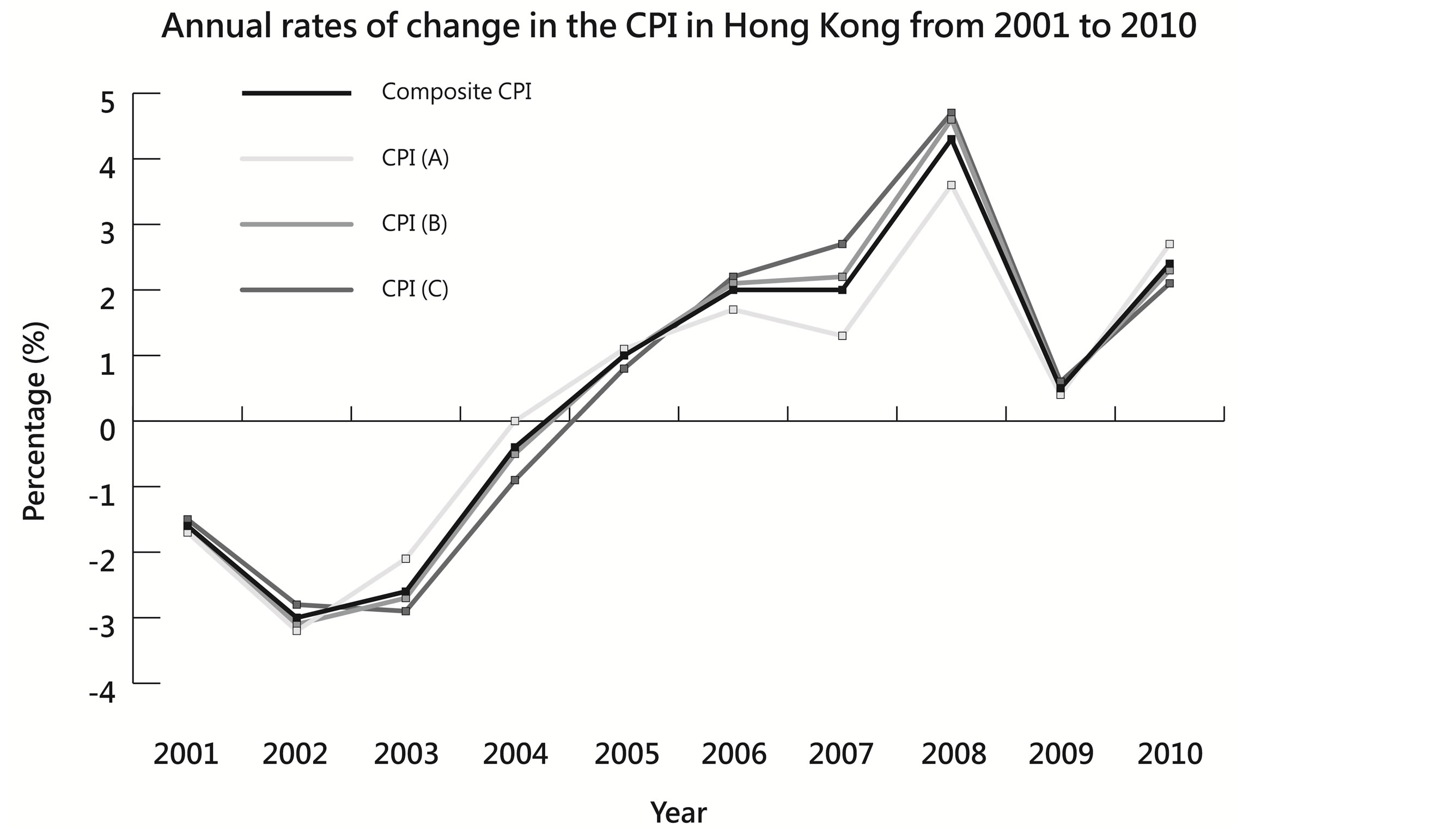
Figure 3. Annual rates of change in the Consumer Price Index in Hong Kong from 2001 to 2010 (%).
Table 1. Annual rates of change in the Consumer Price Index in Hong Kong from 2001 to 2010 (%).
Note: Source: Census and Statistics Department of HKSAR, 2006 and 2011b.
passed pre-1997 level have exacerbated the situation.
Furthermore, even though the Government has been issuing measures in creating jobs, it is very unlikely to achieve full employment in Hong Kong as there is always a mismatch in expectations between the employers and the jobseekers. There are men without job and job vacancies without workers, when it is not difficult to see long-hour hard work paid with a small sum compared to a leisurely job paid handsomely. It is the laissez faire policy of the Hong Kong Government implemented without any directional change when the first tier income redistribution (i.e. employment through market mechanism) failed, which have polarized income inequality.
In spite of the gradual decrease in unemployment rate recorded from over 5% in the first two seasons in 2009 to as low as 3.2% in the last quarter of 2011, the figure climbed to 3.4% in February 2012. Job vacancies have dropped from 57,700 in September 2011 to 55,100 in December 2011 (4.4% decrease). These indicate a loss of confidence in the business environment due to uncertainties and instabilities, which give pressures to the job market. The Hong Kong Government has implemented the Statutory Minimum Wage Rate in 2011 which has temporary promoted the salaries of many low-income workers (Minimum Wage Commission, 2012), but the effect of the intervention wears off quickly under current severe inflation.
6. Inflation and the Exacerbation of Poverty: Assets Price as a Social Indicator
As an internationally renowned financial centre with one of the world’s busiest stock exchange markets, the strength of the Hong Kong economy can be quantified by the Hang Seng Index (HSI), the most widely quoted gauge measuring and recording the performance of the Hong Kong stock market. The Index reported on the market values of many major listed companies in Hong Kong from various sectors, it hence reflected on the performance of the companies, i.e. profitability. If the enterprises gain, it would not be unreasonable to expect them to recruit more human resources for growth while raising salary to keep their staff. From the above, we can reason that an increase in HSI indicates a growth in the economy. The Hang Seng Index has rebounded from the bottom with a rising speed since 2002, which plunged when the subprime mortgage crisis broke out in 2007, but gradually recovered starting from 2008. Yet it still shows a generally upward trend (See Table 2 & Figure 4).
Having a home is the basis to one’s livelihood that housing, regardless of sale or rental, constitutes to one of the most important expenditures of a consumer. Housing contributes to 33% of all expenses of a household (Census and Statistics Department, 2011a). In other words, the price as well as the rent of estates has a significant impact on the costs of living. The trend of the price and the rent of private housing display a close resemblance with the pattern of the HSI. Both the price and rent fathomed the bottom in 2003 and started to climb up again. Also about the time of the financial crisis, that the rent dipped in 2009 following the downturn of the economy, but the property price shows more resilience and kept constant. Both of the two indices regained their momentum and skyrocketed from 2010. In general, the cost of housing has surged dramatically since 2003 (See Table 3 & Figure 5).
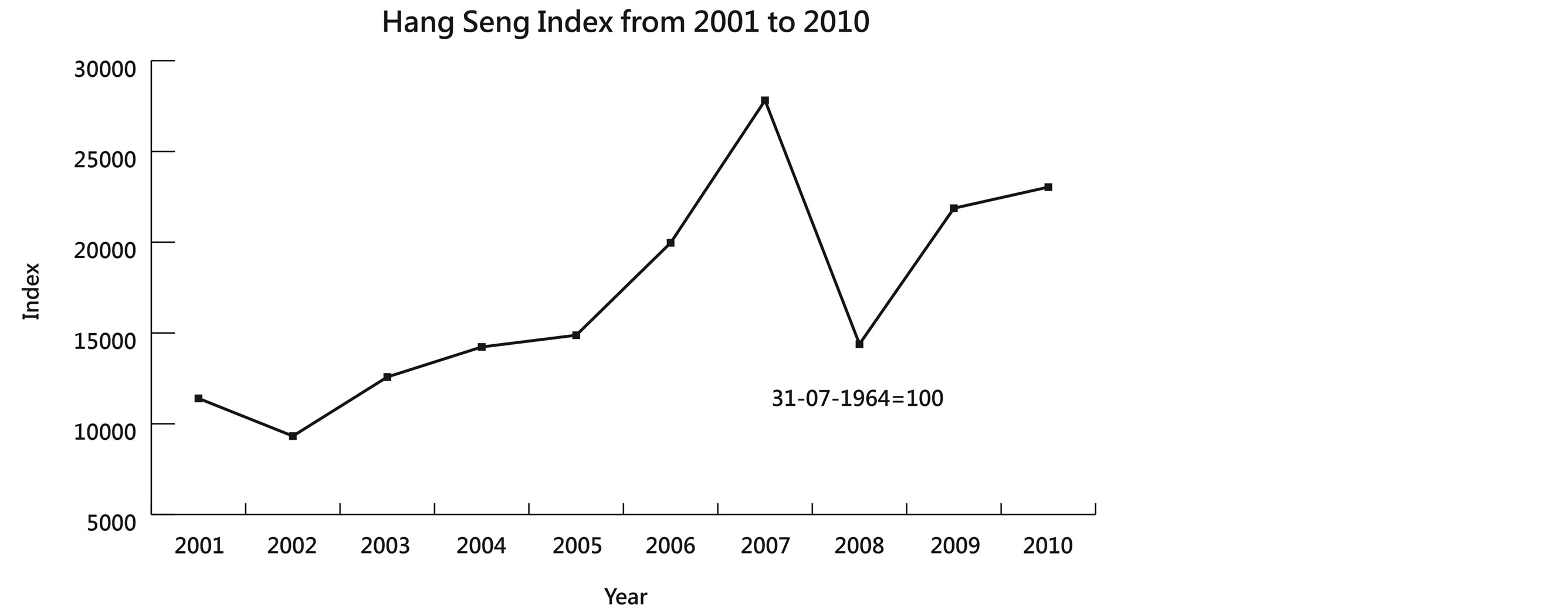
Figure 4. Hang Seng Index in Hong Kong from 2001 to 2010 (Closing Price).
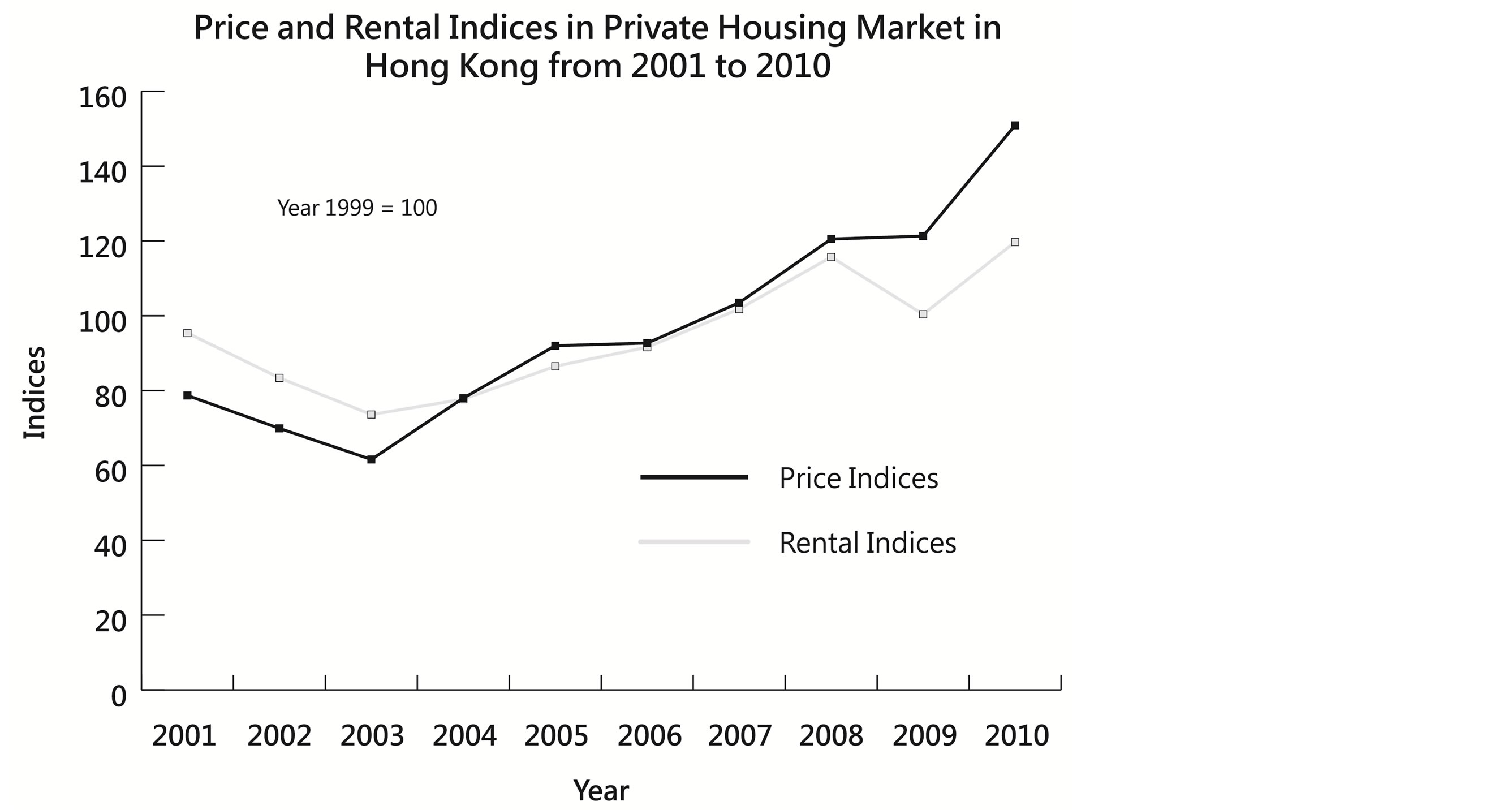
Figure 5. Private housing market in Hong Kong from 2001 to 2010.
When comparing the trend of price and rent in housing market with that of the stock market, despite the likeliness observed, a “shift” of 1 year can also be noticed. This not only indicates that the performance of property market is closely linked and directly proportional to the stock market, it is also suggesting that there is a causal relationship between them—capital in the stock market will subsequently become the capital of the estate market. Such a relationship explained the 1 year time lag before the economic situation as represented by the HSI is reflected on the property market. Hence, we can suggest that financial market can significantly affect the fixed asset price.
An increase in fixed asset leads to an increase in rent, which will give pressure to the pricing of all other commodities when such an unavoidable expense will be counted as overhead cost, and hence the cost of living is pushed up, which is reflected in the Consumer Price Index (CPI) which “measures the changes over time in the price level of consumer commodities and services generally purchased by households. The year-on-year rate of change in the CPI is widely used as an indicator of the inflation affecting consumers” (Census and Statistics Department, 2012b).
CPI (composite) is further divided into 3 categories, A, B, and C, reflecting the costs of living of those lower, middle, and higher income households respectively. The costs of living for everyone have gradually increased, but the higher income group has a way higher inflation (See Table 4 & Figure 6). Inflation leads to a rise in the price of consumables and erodes the purchasing power of money, but contrarily it also increases the real value of assets. Those who have assets can benefit from the general rise of price level. So a higher rate of inflation for the higher income households can be interpreted as a higher revaluation of their assets.
Yet investing stocks and purchasing properties need capital which is, perceivably, exclusive for the rich. Those who are financially less comfortable, can only wish to brace the surging costs of living with a nominal salary increase which is always insufficient for the lower income group. While the actual wealth of the rich continues to grow, overtaking the inflation rate with the help from investments and assets appreciation, the proletariats’ wealth is severed by the increasing costs of living. Such capitalistic difference in facing inflation is widening the wealth disparity and hence the poverty gap.
When the economy is vibrant, and that everyone has a nominal increase of income, there will be an increase in money supply. When the growth of money supply is excessive, the demand for goods and services will be larger than the supplies, and such scarcity will lead to inflation, which contributes to the widening of poverty
Table 2. Hang seng index in hong kong from 2001 to 2010 (closing price).
Note: *31-07-1964 = 100. Source: Census and Statistics Department of HKSAR, 2006 and 2011b.
Table 3. Private housing market in Hong Kong from 2001 to 2010.
Note: *Year 1999 = 100. Source: Census and Statistics Department of HKSAR, 2006 and 2011b.
Table 4. Consumer Price Indices in Hong Kong from 2003 to 2010 (2004/05-based).
Note: *Oct. 2004-Sep. 2005 = 100. Source: Census and Statistics Department of HKSAR, 2007 and 2011c.
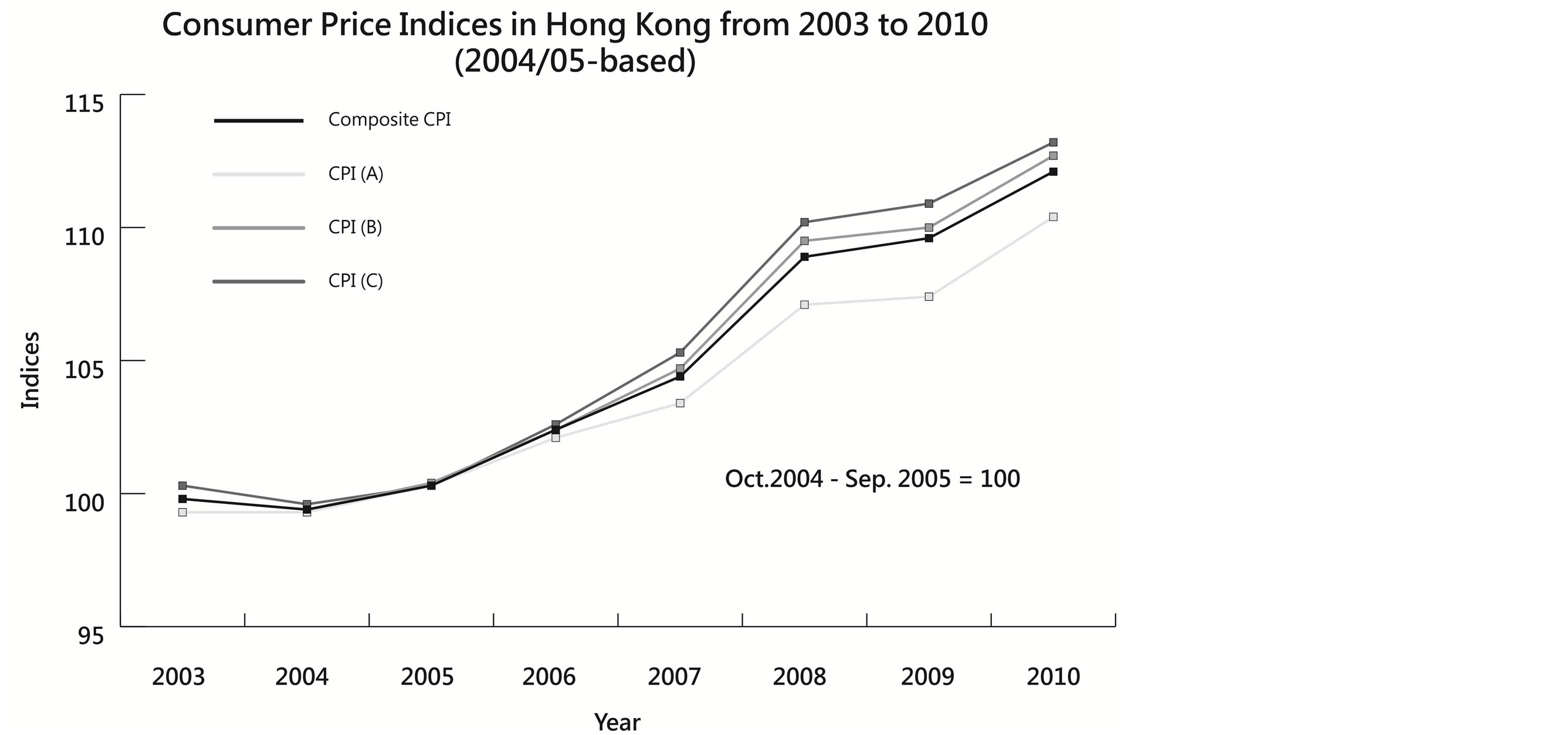
Figure 6. Consumer Price Indices in Hong Kong from 2003 to 2010 (2004/05-based).
gap capitalistically. As illustrated earlier, since the Hang Seng Index measures the vibrancy of the economy financially and the housing price and rental indices measures the costs of living, they can thus be used as indicators to the possible broadening of wealth disparity.
7. The Diminishing Population Dividend: Economic Growth Will Come Harder
Economists usually credit economic growths to the successful fiscal measures of the government and the strategies of capitalists, but they have ignored the fact that the vigorous economic expansion experienced especially after the Second World War has been contributed by the enormous increase in work force due to the Baby Boom with less people depending on the society. As long as the depending population is sufficiently supported by the working population, and when the rate of increase of the lab our supply surpasses that of the dependents, growth is guaranteed. We regard the economic growth largely as a result of demographical transition referred to as the “population dividend” (Wong & Wong, 2008).
The recent retractions in economy as experienced mostly by developed western countries are claimed to be systematic. Many blame the incompetency of fiscal tools and the greed of capitalists, while disregarding the factual truth that population ageing which overhauled Europe and other developed countries is the true culprit. By the year 2000, those baby boomers gradually, but in large batches, entered old age. As they retired and leave the workforce, they have significantly increased the dependency ratio. Consequently, the GDP is hampered by the shrinking working population as well as the surging welfare expenditure. It is said to be the diminishing population dividend which contributes to the contraction of the economy.
Hong Kong as a developed economy is no exception, that our population dividend will be depleted in 2012. The growth rate of the dependents (age 0 - 14 and 65 or above) at 0.4% outpaced the growth rate of the working population (age 15 - 64) at –0.2% (Census and Statistics Department, 2012c). It is foreseeable that economic growth in Hong Kong will be a bigger challenge in the future.
8. Intergenerational Income Disparity Increase Welfare Burdens
The adverse economy brings along with the laying off of employees and insignificant salary raises against inflation, which has slashed the purchasing power of a large portion of the working population in Hong Kong that many continue to live in poverty. As wealth accumulation is easier if one has knowledge and/or capital in this knowledge-based capitalistic society, this also implies that those without capital, assets or sophisticated knowledge are very unlikely to generate wealth. When knowledge, or id est education, has been commercialized into a business, the increasing costs to education and trainings are in fact broadening the knowledge and capital gaps between the children of the rich and the poor households. The vicious spiral of unequal access to resources has led to inter-generational poverty, which haunted the future generations indefinitely and bound them to the lower strata of social classes. Living in poverty, many thus rely on social welfare with grievances against the society.
Hong Kong with its history as a British colony has developed into a near welfare state; though lacking in natural resources, Hong Kong is expected to be financially self-sufficient while providing public welfare. Wong, Wan and Law (2010) as well as Ma (2011) have echoed that Hong Kong has continued the welfare regime of its colonial master even after the return of sovereignty to China in 1997. Cohorts of poor from older generation usually are quite contented with this “safety net” but the “new poor” may not be the same. In fact, the Asia Financial Crisis in 1997 had ceased the ideal social condition of full employment, that the problem of poverty and income inequality had been increasingly felt by the citizens (Wong, Wan, & Law, 2010). The voice for a greater magnitude of government intervention through public welfare had emerged (Kwon, 2009).
Under the pressure of the ever-growing demands in increasing welfare at a time of economic adversity, the Hong Kong government retrenched public welfare in order to secure legal legitimacy to keep a surplus budget while reinforcing the belief that Hong Kong’s prosperity is fragile. Furthermore, the government continues to publicize the acute situation of the rapid growth of welfare expenditure that expanding public welfare will induce more able-bodied to rely on the social security system with cases of fraud and abuse (Wong, Wan, & Law, 2010). To the government, the culprit to the soaring demands of welfare is the “culture of poverty”, that it is the attitude and behavior of the poor which restrict them from accessing to economic viability and success (Jordan, 2004). To sum up, the characteristics of the welfare regime in Hong Kong are: “economic growth as an overriding policy objective, a low level of welfare spending, ideological rejection of welfarism, and an emphasis on private sources of welfare” (Wong, Wan, & Law, 2010: p. 634).
Such a welfare regime continues without major changes in policies. However, fiscal austerity in welfare expenditure is not convincing when the economy has revived years later where the Government has recorded a huge amount of surplus. The public is dissatisfied that the government celebrates the prosperity of a few riches when the millions are living in poverty. With a limited budget, government frequently announces restrictions for welfare spending in the name of future sustainability. However, many new policies (especially those in property development) are skewed towards the wealthier have irritated the emotions of the Hong Kong citizens.
9. Skepticism towards Business in an Unjust Society
The norm of the Hong Kong people is to appreciate self-efforts. Most of the working populations are willing to abide to the game rules as set by the knowledge-based economy, that they believe by acquiring a higher vocational or academic qualification can progress themselves in their career pathway. The Hong Kong Government has initiated programmes such as employees retraining and continual education to help the working force to fit into the structural changes of the economy in order to achieve full employment. However, when education can be commonly accessed, the qualifications acquired have experienced a deflation where many shares the same level of knowledge, such that a higher knowledge qualification does not guarantee a promotion as job vacancies are limited especially for senior positions. Tensions built up when institutional or individual efforts both failed to help the lower class escape from poverty.
Jealousy amongst the poor is understandable, and it is not difficult to observe hatred towards the rich and against commercial activities. There is rising public skepticism, grievances and even confrontation against a few tycoons, business groups and sectors, particularly developers from the real estate industry. By searching Wisenews, the occurrence of keywords in newspaper articles such as “profiteers (奸商)” and “hate-rich (仇富)” have skyrocketed from 252 in 2001 to 564 in 2010 and 0 to 1257 respectively (See Table 5 & Figure 7).
Table 5. Number of Chinese newspaper articles with keywords of “Profiteers”, “Hatred toward the business sector”, “Hatred toward the rich”, and “Inflated buildings” (2001-2010).
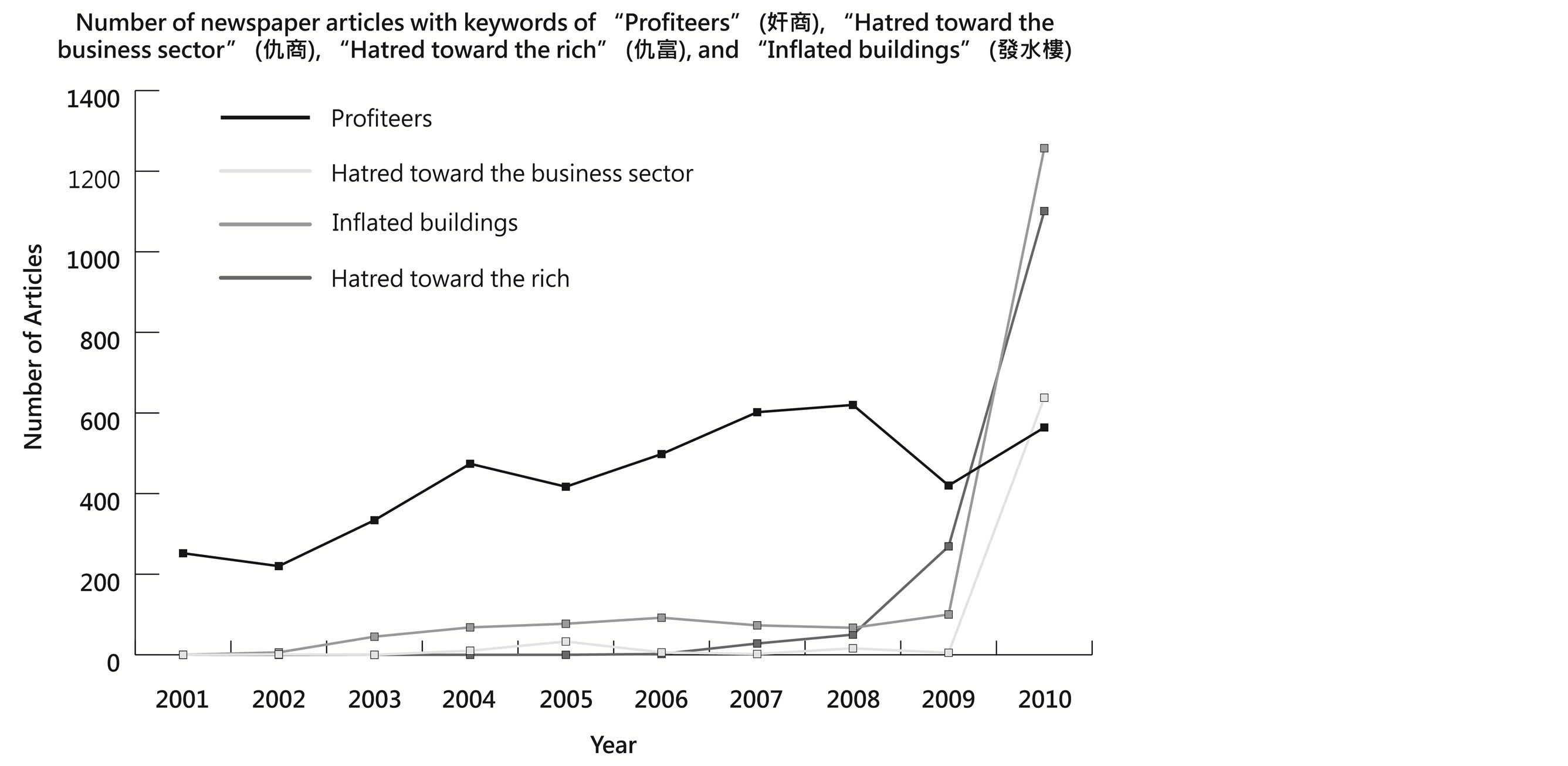
Figure 7. Number of Chinese newspaper articles with keywords of “Profiteers”, “Hatred toward the business sector”, “Hatred toward the rich”, and “Inflated buildings” (2001-2010).
However, the billionaires are respected not only for their wealth and power, but more for their struggles along their roads to success under a free-for-all environment with equal opportunity for everyone. Global business giants such as Bill Gates and Warren Buffet are renowned for their corporate social responsibilities and personal philanthropy. These examples have suggested that it is the lack of the aforementioned qualities which has resulted in the condemnation of the bourgeoisie. Under the deteriorating economic environment shared by a large population, many have been aware of the reality that a few giant groups have long been controlling the livelihood of the Hong Kong people, and through which have been taking huge profits by oligopolistic operations. These businessmen are blamed for their manipulation of market price constituting to an asymmetrical power over consumers and even the government, that they have dominated the fruit of economic development at the expense of the poor. As they are influential in the process of policy making to construct a commercial-friendly environment, they appear to the public as obstacles to improve social justice such as the implementation of minimum wage and anti-discrimination in workplace which are supposed to be beneficial to the working class.
Hong Kong people are willing to tolerate a bias towards the business sectors in terms of political privileges and economic benefits in exchange of the “perceived economic viability of the system” (Ma, 2011: p. 705), that the persistence of such inequality hinges on the belief that the society will benefit from it as a whole. The stability and legitimacy of the Government’s rule rests on the assumption of a materialist culture (Ma, 2011). But there is a change in the “core-values” in Hong Kong as the city has long past the stage of only meeting basic physical needs. Hong Kong people especially the young generation who grew up in a relatively affluent society, pursue post-materialistic values such as social justice, fair-play, consumer-rights, market transparency and so forth as treasured in other advanced societies. Keywords such as “social enterprises (社會企業)” (4 occurrences in 2001; 857 in 2010), “wealth comes before virtue (發財立品)” (54 in 2001; 159 in 2010) and “corporate social responsibility (企業社會責任)” (6 in 2001; 522 in 2010) have been more frequently found in newspaper articles recently (See Table 6 & Figure 8).
10. Economic and Social Tensions as Conditions for Governance Crisis
The current discontents towards the extravagance, unethical wealth and immoral profits of the rich, the suspected briberies between the Government and the business giants, as well as the ineffectiveness of institutional intervention of the administration, are said to be accumulating to a breaking point that the anguish of the subjugated and the repressed are to be vented. Should such dissatisfaction and rage cannot be channeled and depressurized, social unrests are very likely to happen which directly and indirectly threatened the governance of the Hong Kong Government.
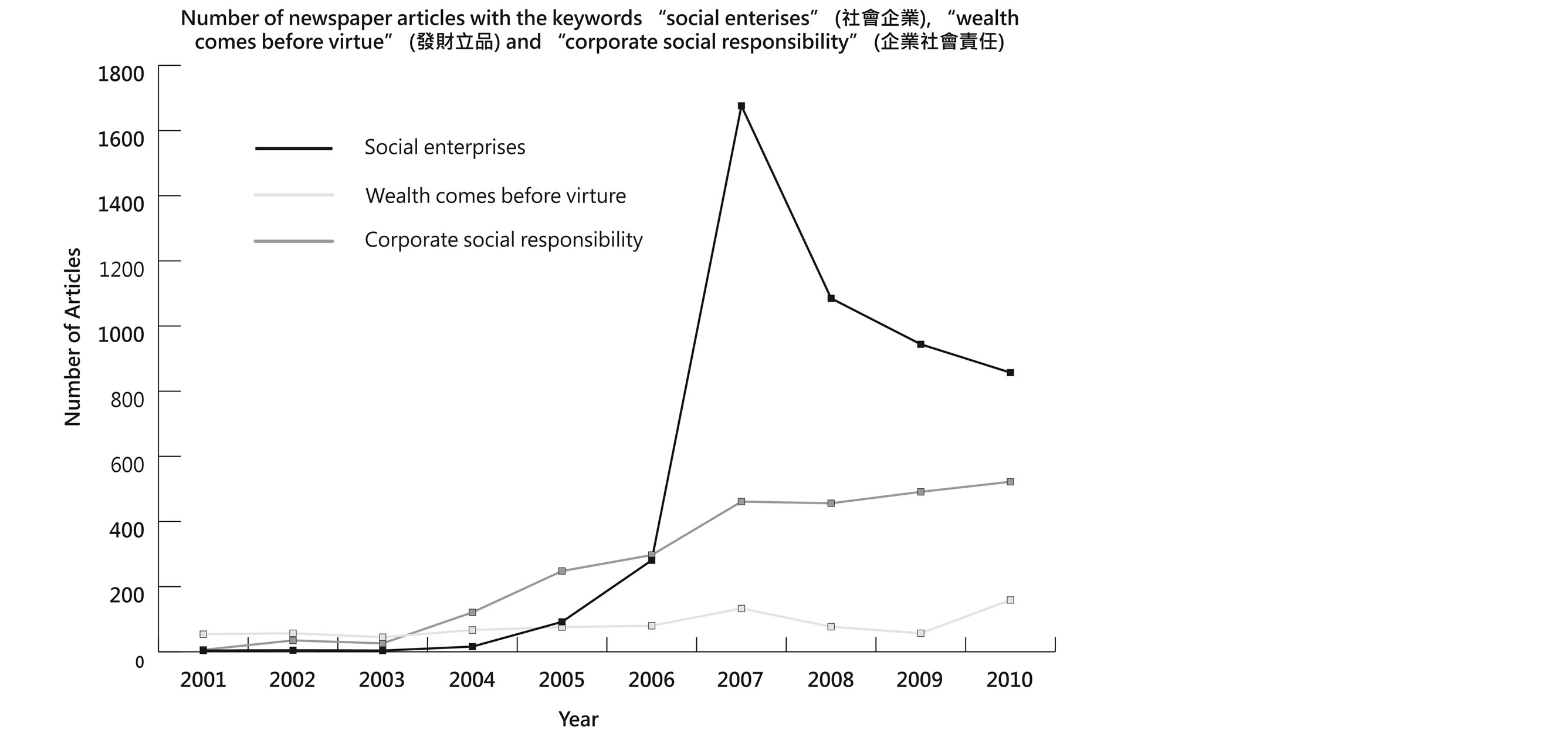
Figure 8. Number of Chinese newspaper articles with keywords of “Social enterprises”, “Wealth comes before virtue”, and “Corporate social responsibility” (2001-2010).
Table 6. Number of Chinese newspaper articles with keywords of “Social enterprises”, “Wealth comes before virtue”, and “Corporate social responsibility” (2001-2010).
As explained by Clarke and Newman (1997), any challenge disrupting the stability of the political-economic, social and organization aspects of the welfare state is considered as a potential factor to a social crisis. Whenever we see a great economic recession, it is very likely that people will resolve in economic determinism as well as market fundamentalism, but ignoring the socially consequences (Clarke, 2010). Failing to address the crisis holistically may endanger firstly, the operation of capitalism, secondly the social relations between communities, thirdly the integrity of the State and lastly the political legitimacy and social authority (Hall, Critcher, Jefferson, Clarke, & Roberts, 1978).
The media plays a crucial role in stirring up the discontent emotions of the underprivileged citizens. There has been a general increase in press coverage of the issues of poverty over the past ten years (See Table 7 & Figure 9), and with such broadening attention it seems that the situation is deteriorating. Many have looked into the persuasiveness and influence of mass media over the public, and it is suggested that “people may infer public opinion based on their perceptions of the general content of press coverage and their assumptions” (Gunther, 1998: p. 487). People concern about how other thinks when making judgment, and empirical studies show that the content of press coverage has a significant weighting in its audience’s perception of public opinions (Gunther, 1998). It would not be unreasonable to conclude that to many, the mass media is public opinion. Whether intentionally or unintentionally, the media “control” the information we perceived. Hall et al. have suggested through a study of a single case of black youngster mugging in the UK which had led to a nationwide panic towards the black community and eventually undermined the social stability and governance legitimacy as the clashes had elevated into racial, religious and class discrimination with the amplification and propaganda by the mass media (Hall, Critcher, Jefferson, Clarke, & Roberts, 1978).
It is very similar to the current situation in Hong Kong, that newspapers and broadcasts have stimulate and manipulate public opinions by exposing designedly various unjust tricks and activities as done by certain leading business groups which benefited at the expense of the livelihoods of the general public. They have created a bi-
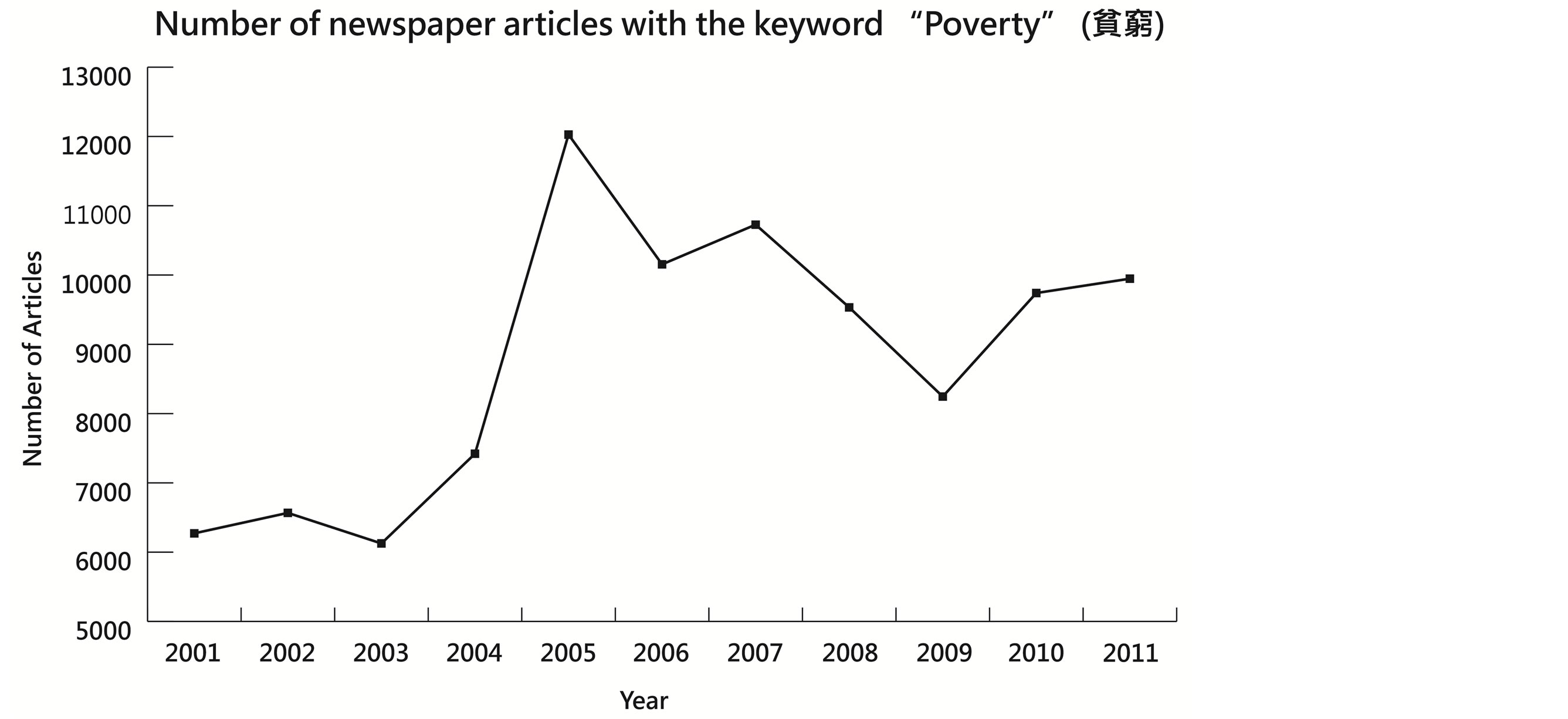
Figure 9. Number of newspaper articles with the keyword “Poverty” (貧窮).
Table 7. Number of newspaper articles with the keyword “Poverty” (貧窮).
nary opposition between the rich and the poor through a simplification of the social structure, that the rich are immorally greedy and the poor are unreasonably deprived. By bundling all the citizens into two camps, it is a reenactment of the class struggle of Karl Marx where the bourgeoisie are portrayed as enemy of all proletarians and working class. Under such rationale, all rich must be selfish and all poor must be their victim. There will be no “middle-ground” and everyone will have to choose side. A new “culture of poverty” is thus established in a sense that many victimize themselves as the poor in order to be “ethical” in the society.
When the continuum of social strata is compressed into a binary opposition, the sandwiched strata which originally acted as buffers between the two extreme parties are thus eliminated, which in turn results in a direct confrontation between the rich and the poor. A spark of conflict may easily transform into a holistic warfare of the society, disrupting social harmony and thus created obstacles to the governance.
11. Poverty Gap as a Signal to Social Unrest
The United Nations Human Settlements Programme (UN-HABITAT) has defined a scale for social inequality using Gini coefficient, that areas with coefficients under 0.299 will be regarded as low inequality; between 0.300 and 0.399, relatively low inequality; 0.400 and 0.449, relatively high inequality; 0.450 and 0.499, high inequality; 0.500 to 0.599, very high inequality; and 0.600 or above, extremely high inequality. An international alert line of 0.4 is set and above which “inequalities may have serious negative political, social and economic consequences for societies if not properly addressed” (United Nations Human Settlements Programme (UN-HABITAT), 2010: p. 64). Even at the level of high inequality, it is said to be a condition which “discourage capital expenditure and lead to sporadic protests and riots. (ibid.)” With a current Gini coefficient of 0.434, Hong Kong although being distanced from its record high of 0.533 in 2006, has passed the international alert line for a long period of time since the ‘80s. The rebounding coefficient is a warning to the critical situation of unsolved class conflicts which endanger the legitimacy of governance.
There are no lack of international experiences such as the Arab Spring (i.e. so called “Jasmine Revolution”) which is a wave of revolutions invoked by the self-immolation of a grass-root student in Tunisia in protest against the hardship in livelihood due to economic and political inequalities and eventually led to the downfalls of 4 governments of Tunisia, Libya, Egypt and Yemen, as well as a series of major civil uprising in many countries in Northern Africa and in the Middle-East. The civil revoke in Wukan Village, Guangdong China in protest against the illegal requisition of property has also indicated that the repressed citizens no matter how tolerant they are will be forced to resist when they have been deprived of the right to access basic necessities, even in a highly controlled village of China.
Now Hong Kong is facing an economic downturn with severe inflation hitting hard onto the livelihood of the lower classes. This is contrasted openly by the reaping of colossal profits (e.g. announcements of over US$5,000 per footage for privately developed housing units) without public sanctions. Hatred towards the rich and the social system has been accumulating, and is particularly evident among the so-called middle income population. The Government, which is responsible to represent all citizens from all walks of life, is regarded by the public as both ineffective and inefficient in balancing the interests of the wealthiest and the rest. The discontent, the hatred as well as the distrust towards the government and the rich are rocking the legitimacy of our governance. The critical situation is now complicated by external factors such as the influx of the Mainlanders who are blamed for seizing the already scarce resources of Hong Kong (such as maternity beds) while pushing up the commodity prices. (Mainlanders are portrayed as big tycoons bringing baskets of cash paying off the expensive flats all at one go without bank mortgages!) This phenomenon has not only heated up the already intensified conflicts between the rich and the rest, but has also transformed into a disruptive discrimination against foreign personnel.
12. Media Coverage of Poverty Gap as a Social Indicator to Governance Crisis
Information is critical to decision making, that by acquiring it shall allow a more accurate understanding to the situation for an individual to act and react accordingly. For public administrators responsible to their citizens, the government performance is tied to their authority and legitimacy, thus for managements such as the mayors, city managers, and governors are desperate to know what has happened and what is going on within and outside the organisation, that they can make adjustments to their policies so as to achieve efficiency with limited resources. Consequently, they need a sophisticated management tool to measure the government’s performance (Holzer & Kloby, 2005).
The widening income gap is a common phenomenon and is not exclusive to developing economies but also to developed economies such as Hong Kong. Income gap is an indicative area to check the government’s performance in income redistribution and balancing interests amongst social strata. The Gini coefficient is a widely adopted mathematical tool offering a scientific measurement of income inequalities, that it has statistically demonstrated that Hong Kong has a prominent poverty gap. As aforementioned, poverty gap will eventually lead to the destabilization and undermining of governance.
Yet, income disparity is not the necessary and direct cause to the calamity in administration but a sign. Being poor does not essentially be unpleasant, and being rich, happy. Meanwhile, other’s wealth does not have anything to do with your own. In other words, the extent of satisfaction towards a regime does not directly relate to the mere existence or the widening of the income gap. It is the lingering and deepening of poverty id est the unchangeable and at worst the worsening of quality of life subsequent to the widening of income disparity that rouse up the dismissal emotion of the poor towards the societal system, of which its accumulation without a timely relief will ultimately transform into actions threatening the legitimacy of the regime. In this case, Gini coefficient as an economic indicator has failed to measure the humanity facets of income disparity that fuse the governance crisis, namely emotion and value.
Citizens as natural recipients of the government administration, they are responsive to whether the organization is providing adequate services and modeling the society, that their feelings and reactions towards the government’s performance will eventually affect the governance of the latter. Consequently, citizens’ opinions play an important role in the formulation of socially relevant measures (Holzer & Kloby, 2005). It is vital to monitor citizens’ emotional and value changes towards the widening of poverty gap, which are the direct cause to the triggering of anti-governmental actions. While economic indicators often “have the weakness of being unable to reflect the flexible psychological processes that mediate the link between external resources and individual experiences” (Diener & Suh, 1997: p. 203), the measuring of the citizens’ subjective perception towards and experience of the society will be crucial to the policy makers to round up remedial measures in time and to plan for the future.
Unfortunately citizens “are often cynical, distrustful and are primarily comfortable participating with government from a distance (e.g. letter writing campaigns or petitions)” (ibid.: p. 523), such that it is difficult to collect a figurative data for reference. Furthermore, it is impossible to perform large scale qualitative or quantitative surveys frequently to track the changes of citizens’ subjective opinions and feelings. Yet we still in need of societal measurement tools to complement with the economic indicators that together they can provide a more comprehensive, accurate, and update information for decision making.
While we understand that media has the ability to reflect and affect public opinions, it would not be unsuitable to choose media, such as newspapers, as a proxy in gathering social intelligence, that by which reports we shall understand the ongoing situation closely and most importantly, they are recorded on a daily basis in black and white. It has been widely proven that there is a “strong relationship between the amount of news coverage of contentious issues and where such issues rank on the public agenda” (Bengston & Fan, 1999: p. 494). So whenever there is more exposure of a topic, there will be a greater potential energy stored in the crowd. When such energy is accumulated to a noticeable level breaking the threshold of the society, its outburst can be catastrophic to the governing social establishment.
Yet it is understandable that subjective opinions may vary vastly from man to man, and concepts must be generalised before concluding that there are something shared amongst the society. A more objective way to account for the public opinions is recommended to provide a more scientific and reliable reference to policy makers in making accurate decisions. As newspapers are widely recognised as a trustworthy textual source, that by quantifying their contexts (i.e. counting the frequency of appearance of keywords) shall give us an objective illustration of the significance of particular concepts. Bengston and Fan (1999) have demonstrated constructing a social indicator to assess the conflict over natural resources between the citizens and the management through the application of media text analysis. By developing a list of words and phrases categorised in 7 categories, namely 1) Participants, 2) Anger, 3) Name-calling, 4) Derogatory characterizations, 5) Terms referring to legal battles, 6) Civil disobedience, and 7) General conflict words, they identified the expressions of the conflict (ibid.).
In this essay, we adopt the same essence as of Bengston and Fan, that we attempt to measure the discontents and concerns of the Hong Kong citizens over the issue of poverty gap as well as identifying their determined culprits behind the persistence and widening of poverty gap. In the previous sections, we have been able to show that there is an increase in negative emotions towards the unjust phenomena in addition to the rising attention towards social justice and core values. We have also demonstrated how ignoring the subjective opinions of citizens may lead to governance crisis.
The policy maker could have a frequent indicator on how the poverty issue evolves during the policy decision process, which could complement the Gini coefficient in measuring the impacts of the widening of income diversity to the administration.
13. Conclusion: Swift Actions Required to Resolve Social Tensions
This paper has pulled together an argument that poverty gap alone, if wide enough, can cause governance crisis in Hong Kong. In general, Hong Kong people tolerate biases towards the business sectors in terms of political privileges and economic benefits in exchange of the “perceived economic viability of the system”; thus government’s expected role is in its balanced governance for making sure of a fair distribution of social resources to all citizens i.e. drawing closer the poverty gap. Noting from increasing criticisms and other indicative events showing governance crisis following a widening of the poverty gap, immediate actions are needed to resolve social tensions.
It is suggested that both the Government and the business sector (especially the “big six property developers”) must take responsibilities to alleviate the discontent and to response to any reasonable demands for a fair society from the public. The Government should reassert its primary economic roles as “provider”, “facilitator” and “regulator” to ensure a fair and open habitat with high social mobility. Sufficient and adequate assistance should be provided to the underprivileged groups through policies targeting at all ages upon the impacts of the ageing population, as well as at general poverty for better training and employment initiatives.
A corporation is not only responsible to the shareholders. Businesses should also take up their roles in building a harmonious society by repaying the community from where they make the profits. Corporate social responsibilities are not only duties to fulfill, but are also goodwill which adds values to business while easing off the discomfort of the consumers towards capitalistic activities. Government on the other hand is to advocate fairness by narrowing the poverty gap, both in the first and second tiers of wealth distribution. Only through such processes, the interest of every member in the society can be balanced and thus the discontent which leads to social crisis can be channeled and better resolved.
References
- 2011 Population Census Office (2012). 2011 Population Census Summary Results. http://www.census2011.gov.hk/pdf/summary-results.pdf.
- Bengston, D. N., & Fan, D. P. (1999). Conflict over Natural Resource Management: A Social Indicator Based on Analysis of Online News Media Text. Society & Natural Resources, 12, 493-500. http://dx.doi.org/10.1080/089419299279560
- Census and Statistics Department (2006). Hong Kong Annual Digest of Statistics. 2006 Edition. http://www.statistics.gov.hk/pub/B10100032006AN06B0700.pdf
- Census and Statistics Department (2007). Monthly Report on the Consumer Price Index: December 2006. http://www.statistics.gov.hk/pub/B10600012006MM12B0100.pdf.
- Census and Statistics Department (2011a). 2009/10 Household Expenditure Survey and the Rebasing of the Consumer Price Indices. http://www.statistics.gov.hk/pub/B10600082010XXXXB0100.pdf.
- Census and Statistics Department (2011b). Hong Kong Annual Digest of Statistics, 2011 Edition. http://www.statistics.gov.hk/pub/B10100032011AN11B0100.pdf.
- Census and Statistics Department (2011c). Monthly Report on the Consumer Price Index: December 2010. http://www.statistics.gov.hk/pub/B10600012010MM12B0100.pdf.
- Census and Statistics Department (2012a). 2011 Gross Domestic Product. http://www.statistics.gov.hk/publication/stat_report/national_income_bop/B10300022011AN11E0100.pdf.
- Census and Statistics Department (2012b). Annual Report on the Consumer Price Index 2011. http://www.statistics.gov.hk/publication/stat_report/consumer_price/B10600022011AN11B0100.pdf.
- Census and Statistics Department (2012c). Projected Hong Kong Life Tables for 2010-2039. http://www.censtatd.gov.hk/freedownload.jsp?file=stat_table/population/D5320183BXXXXXXXXB.xls.
- Chan, R. K. (2006). Risk and Its Management in Post-Financial Crisis Hong Kong. Social Policy & Administration, 40, 215- 229. http://dx.doi.org/10.1111/j.1467-9515.2006.00485.x
- Clarke, J. (2010). Of Crises and Conjunctures: The Problem of the Present. Journal of Communication Inquiry, 34, 337-354. http://dx.doi.org/10.1177/0196859910382451
- Clarke, J., & Newman, J. (1997). The Managerial State. London: SAGE Publications.
- Diener, E., & Suh, E. (1997). Measuring Quality of Life: Economic, Social, and Subjective Indicators. Social Indicators Research, 40, 189-216. http://dx.doi.org/10.1023/A:1006859511756
- Gunther, A. (1998). The Persuasive Press Inference: Effects of Mass Media on Perceived Public Opinion. Communication Research, 25, 486-504. http://dx.doi.org/10.1177/009365098025005002
- Hall, S., Critcher, C., Jefferson, T., Clarke, J., & Roberts, B. (1978). Policing the Crisis: Mugging, the State and Law and Order. London: Macmillan.
- Holzer, M., & Kloby, K. (2005). Public Performance Measurement: An Assessment of the State-of-the-Art and Models for Citizen Participation. International Journal of Productivity and Performance Management, 54, 517-532. http://dx.doi.org/10.1108/17410400510622205
- Jordan, G. (2004). The Causes of Poverty—Cultural vs. Structural: Can There Be a Synthesis? Perspectives in Public Affairs (Spring), 18-34.
- Kwok, K. C. (2008). Income Distribution of Hong Kong and the Gini Coefficient. Commission on Poverty, The Government of the Hong Kong SAR. www.cop.gov.hk/eng/pdf/Income%20Distribution%20of%20HK%20and%20the%20Gini%20Coefficient.pdf.
- Kwon, H. J. (2009). The Reform of the Developmental Welfare State in East Asia. International Journal of Social Welfare, 18, S12-S21. http://dx.doi.org/10.1111/j.1468-2397.2009.00655.x
- Ma, N. (2011). Value Changes and Legitimacy Crisis. Asian Survey, 51, 683-712. http://dx.doi.org/10.1525/as.2011.51.4.683
- Minimum Wage Commission (2012). Minimum Wage Commission’s preliminary Views on the Study of the Statutory Minimum Wage Rate. http://www.mwc.org.hk/en/whatsnew/MWC%20preliminary%20views_Eng.pdf.
- Niemietz, K. (2011). A New Understanding of Poverty: Poverty Measurement and Policy Implications. London: The Institute of Economic Affairs.
- The World Bank (2004). Poverty Analysis—Measuring Inequality. http://go.worldbank.org/3SLYUTVY00.
- The World Bank (2012). GDP per Capita (Current US$). http://data.worldbank.org/indicator/NY.GDP.PCAP.CD/countries/1W?display=default.
- United Nations Development Programme (UNDP) (2009). Human Development Report 2009. New York: Palgrave MacMillan.
- United Nations Development Programme (UNDP) (2011). Human Development Report 2011. New York: Palgrave MacMillan.
- United Nations Human Settlement Programme (UN-HABITAT) (2008). States of the World’s Cities 2008/2009: Harmonious cities. London: Earthscan.
- United Nations Human Settlements Programme (UN-HABITAT) (2010). State of the World’s Cities 2010/2011: Bridging the Urban Divide. London: Earthscan.
- Wong, R. Y., & Wong, K. (2008). The Importance of Migration Flow to Hong Kong’s Future. Hong Kong Mobile: Making a Global Population (pp. 89-116). Hong Kong: Hong Kong University Press.
- Wong, T. Y., Wan, P. S., & Law, K. K. (2010). The Public’s Changing Perceptions of the Condition of Social Welfare in Hong Kong: Lessons for Social Development. Social Policy & Administration, 44, 620-640. http://dx.doi.org/10.1111/j.1467-9515.2010.00732.x


